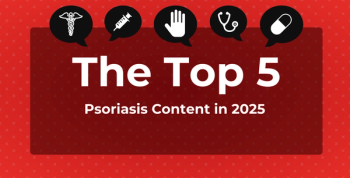
Improving Transitions of Care in the ICU
Clinician handoff is critical and can help reduce medical errors in the intensive care unit (ICU), according to a series of presentations on planning and communicating around ICU transitions.
Clinician handoff is critical and can help reduce medical errors in the intensive care unit (ICU), according to a series of presentations on planning and communicating around ICU transitions.
Joshua Denson, MD, MS, assistant professor of medicine at Tulane University, outlined the types of transitions of care and how poor communication can lead to medical errors, or preventable adverse effects of care.
First, there are a few types of transitions, also known as the handoff. For instance, patients may move in and out of the hospital or different locations in the hospital. Denson focused on the shift handoff, which occurs when a clinician in the ICU goes home and is really only a temporary transfer of care, and the service handoff, which occurs when a resident or fellow leaves permanently at the end of a longer period.
For shift handoffs, research has shown communication breakdowns, documentation failures, and adverse events that occur as a result of the handoff. Although studying this has been difficult, there is an evidence-based intervention that has been investigated, Denson said. A 7-component shift handoff intervention was shown in studies published in JAMA1 and New England Journal of Medicine2 to improve adverse patient events. However, the true test is whether it can be applied in practice.
“And what we've seen is that there's been some struggle with the IPASS–related intervention being implemented,” Denson said. “What this, I think, really highlights is a gap in our research in how we're applying what we're learning to the practice.”
There also hasn’t been much research around service handoffs. There were a few small studies in the 1990s, so when Denson was in his residency, he did a study where he was training at Bellevue Hospital. “I felt like every month when I rotated, that something bad was happening—more frequently that first week when we switched,” he said.
His retrospective study compared the week where residents switched with the 3 weeks when they weren’t switching. The study showed that mortality rates were higher for handoff patients.3
Denson is now involved in developing transition protocols, such as having the incoming and outgoing clinicians meet at the bedside and meet the patient being handed off, as well as a simple checklist that can be incorporated into health information technology to improve care.
Ann Jennerich, MD, MS, assistant professor of medicine at the University of Washington, followed Denson and discussed transitions of care with a focus on patient- and family-centered outcomes. Specifically, she has looked at patients on acute care who have gotten sicker and are transferred to the ICU. These unplanned ICU admissions are common.
She noted that unplanned ICU admissions complicate a patient’s hospitalization, are associated with a higher mortality than admissions from the emergency department, prolong the patient’s hospital length of stay, and increase costs.
“It's common, and it's associated with some negative effects for patients, and also for their family members,” Jennerich said.
She focused on patient- and family-centered outcomes and wondered if the patient’s path to the ICU affected family members’ perceptions of their care. She and her colleagues studied 1500 patients who were ventilated and had 1 or more chronic comorbidities who died in the ICU or within 30 hours of ICU discharge.4
They found that there were lower ratings of quality of care and quality of dying from the family members of patients who were admitted to the ICU from acute care. As a follow-up, Jennerich and colleagues examined the experiences of family members of these patients in a qualitative study using semistructured interviews. Common themes about the experience emerged around relationship building and information processing.
She related a quote from one of the participating family members, who said that it was new information to them that there are ICU doctors and acute care doctors, and there were always doctors coming in to introduce themselves, but they would only be around for 24 hours before the next doctor came in. The family member said it led to “disorientation” around the whole experience.
Jennerich and colleagues focused on developing a handoff checklist specifically meant to standardize communication between interdisciplinary team members. Other processes of the handoff needed to be standardized, she said. In the current paradigm, the location of the handoff, the timing, the content, and the participants were all variables. They wanted to standardize everything so the handoff happened at the bedside with the checklist.
The data are so far unpublished, but Jennerich shared that for 179 clinicians handing off 117 patients, most handoffs took less than 15 minutes in both the pre- and postchecklist periods. In the postchecklist period, only 30% of people were using the checklist, but during this period, the handoff did move to the ICU bedside and increased discussions of patient preferences for care, which were 2 goals.
She finished her session with key takeaways:
- Evaluate the local processes of care to better understand what an unplanned ICU admission looks like at your center
- Identify if any parts of the process can be standardized
- Involve the patients and family in transitions so they understand what led to the transfer and how the transfer will affect the patient’s care
- Address unmet expectations
- Acknowledge health care silos
“[There are] lots of things we can do to help improve transitions for people experiencing unplanned ICU admission, and a lot of work yet to be done,” Jennerich said. “And we're slowly addressing that and hope to have more insights about interventions that improve patient and family centered outcomes in the future.”
References
1. Starmer AJ, Sectish TC, Simon DW, et al. Rates of medical errors and preventable adverse events among hospitalized children following implementation of a resident handoff bundle. JAMA. 2013;310(21):2262-2270. doi:10.1001/jama.2013.281961
2. Starmer AJ, Spector ND, Srivastava R, et al, for the I-PASS Study Group. Changes in medical errors after implementation of a handoff program. N Engl J Med. 2014;371(19):1803-1812. doi:10.1056/NEJMsa1405556
3. Denson JL, McCarty M, Fang X, Uppal A, Evans L. Increased mortality rates during resident handoff periods and the effect of ACGME duty hour regulations. Am J Med. 2015;128(9):994-1000. doi:10.1016/j.amjmed.2015.03.023
4. Long AC, Kross EK, Engelberg RA, et al. Quality of dying in the ICU: is it worse for patients admitted from the hospital ward compared to those admitted from the emergency department? Intensive Care Med. 2014;40(11):1688-1697. doi:10.1007/s00134-014-3425-2
Newsletter
Stay ahead of policy, cost, and value—subscribe to AJMC for expert insights at the intersection of clinical care and health economics.








































